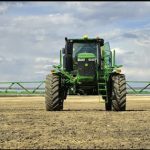How do we identify an eroded knoll? Eroded knolls lose soil organic matter due to years of tillage, wind and water erosion, which results in surface soil lacking good granular structure and thin to non-existent topsoil. When erosion occurs, it has different physical, chemical and biological characteristics. Some physical characteristics of an eroded soil can […] Read more








